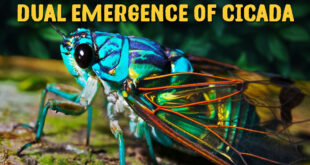- Researchers have created a design for a ‘glowscope’, a device that could democratise access to fluorescence microscopy.
- An optical microscope views an object by studying how it absorbs, reflects or scatters visible light.
- A fluorescence microscope views an object by studying how it re-emits light that it has absorbed, i.e. how it fluoresces.
The process:
- The object is illuminated with light of a specific wavelength.
- Particles in the object absorb this light and re-emit it at a higher wavelength (i.e. different colour).
- These particles are called fluorophores.
- When the fluorophores fluoresce, a fluorescent microscope can track them as they move inside the object, revealing the object’s internal shape and other characteristics.
Uses and applications:
- To identify and study different entities, from specific parts of the DNA to protein complexes.
- Helps identify cells and sub-microscopic cellular components with accuracy and details.
- In the field of histochemistry to detect particles such as neurotransmitter amines which cannot be seen by conventional microscopes.
- It is used in food chemistry to assess the presence, structural organization and spatial distribution of specific food components in a product.
Fluorescence Speckle Microscopy:
- It is a technology that uses fluorescence labeled macromolecular assemblies such as cytoskeletal protein to study movement and turnover rates.
- Fluorescence microscopy staining also is helpful in the field of mineralogical applications.
- It is also widely used in the textile industry to analyze fiber dimensions.
- Epifluorescence microscopy helps to study the fiber-based materials including paper and textiles.
- It is ideal for studies of porosity in ceramics, using a fluorescent dye.
- It is also applicable to studies of semiconductors.
SOURCE: THE HINDU, THE ECONOMIC TIMES, PIB
 Chinmaya IAS Academy – Current Affairs Chinmaya IAS Academy – Current Affairs
Chinmaya IAS Academy – Current Affairs Chinmaya IAS Academy – Current Affairs



